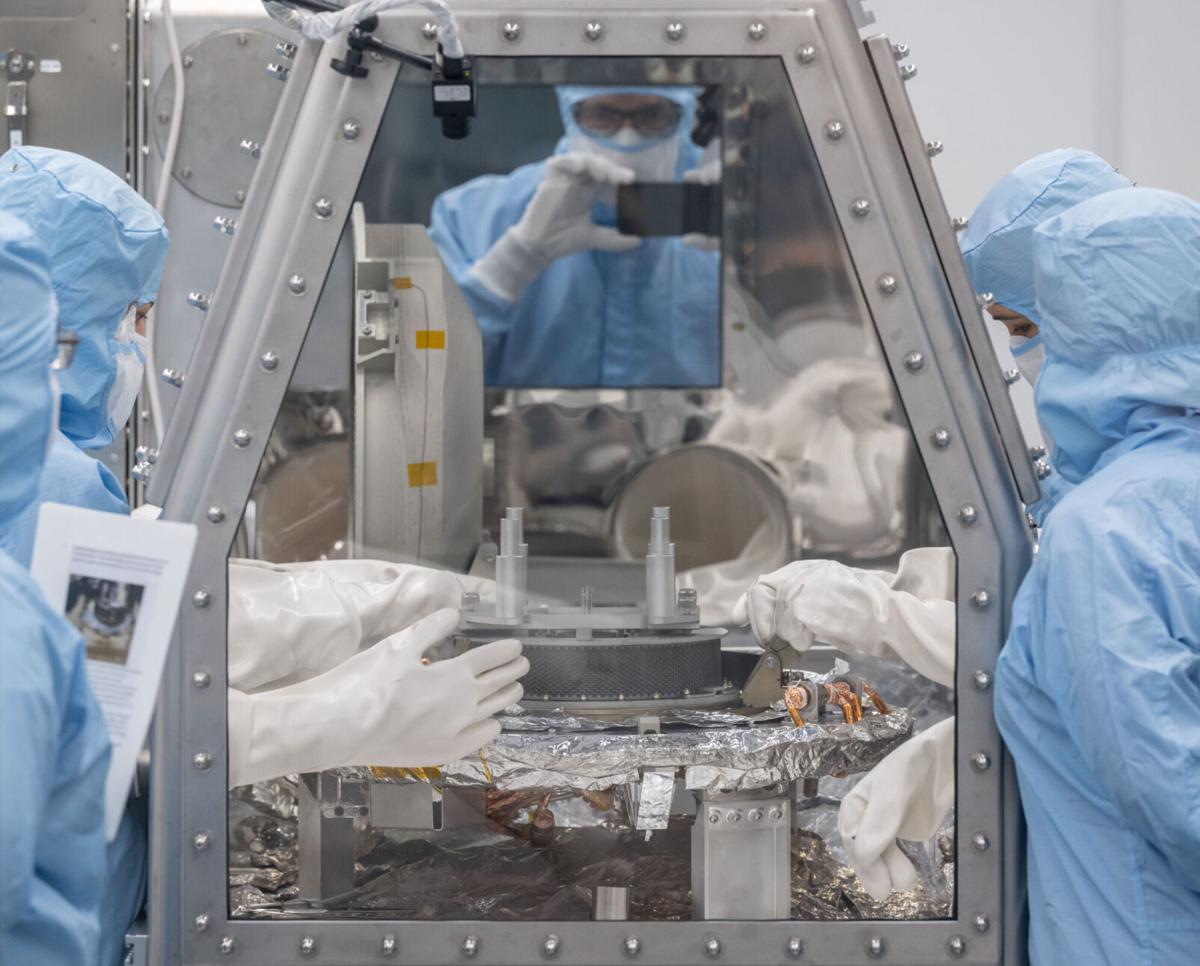Have you ever brought home a jar of pickles from the grocery store but you couldn’t get it open?
Now imagine your shopping trip took seven years, because the store was several billion miles away.
Specialists at NASA’s Johnson Space Center in Houston are still struggling to get the lid off of a canister full of samples from the asteroid Bennu, more than a month after the capsule carrying the priceless rocks and dust landed in the Utah desert.
The curation team at Johnson is now working on a new procedure for retrieving the asteroid bits that are stuck inside the sample head from the OSIRIS-REx spacecraft.
More than enough material has already been collected to declare the University of Arizona-led space mission a success.
The original goal of the $1.2 billion journey to Bennu was to bring back at least 60 grams of rocky debris left over from the formation of the solar system about 4.5 billion years ago.
As of last week, the curation team at Johnson had secured 70.3 grams of asteroid material from inside the protective capsule that OSIRIS-REx delivered back to Earth on Sept. 24.

From left, Francis McCubbin and Scott Sandford, both of NASA, and the University of Arizona’s Dante Lauretta collect data next to the OSIRIS-REx sample return capsule after it landed in Utah on Sept. 24.
Previous estimates suggest there could be another 180 grams waiting inside the sampler head itself, otherwise known as the Touch-and-Go Sample Acquisition Mechanism or TAGSAM for short.
So far, though, curation team members have not been able to open that container to reach the bulk of the asteroid sample.
“After multiple attempts at removal, the team discovered two of the 35 fasteners on the TAGSAM head could not be removed with the current tools approved for use in the OSIRIS-REx glovebox,” the space agency said in a news release.
To protect it from earthly contamination, everything brought back from Bennu is being kept in a sealed chamber filled with nitrogen gas inside a sterile cleanroom at NASA’s new OSIRIS-REx Sample Curation Laboratory at Johnson. The specially trained curators can only manipulate the material and equipment by reaching into the chamber with gloves mounted to the side.
When they couldn’t get the lid off the TAGSAM, the team resorted to holding down the head’s mylar flap and pulling out asteroid debris with tweezers and a scoop.
NASA said team members will spend the next few weeks developing and practicing a new procedure for removing the remaining material from the sampler head. Any tools that are used for the procedure must be able to fit inside the glovebox and not compromise the scientific integrity of the collection or the cleanroom, the space agency said.
OSIRIS-REx principal investigator Dante Lauretta and Dani DellaGiustina the deputy principal investigator, both UA professors, were not available for comment.
Other UA sample scientists involved in the mission declined to be interviewed because they “don’t feel comfortable talking about the issue since they’re not there in Houston dealing with it,” said Mikayla Mace Kelley, a spokeswoman for the university.
While curators at Johnson plan their next move, they have moved the TAGSAM head back to its transfer container and sealed it inside a Teflon bag to keep it in a stable, nitrogen-rich environment.
In the meantime, the OSIRIS-REx science team will proceed with its work to characterize and begin analyzing the material extracted from TAGSAM so far.

A view of the outside of the OSIRIS-REx sample collector shows material from asteroid Bennu that contains evidence of both carbon and water in initial analysis.
Eventually, about 25% of the entire sample from Bennu will be turned over to the U of A-led science team for two years of detailed study by more than 200 researchers at labs in Tucson and around the world.
Later this year, a tiny piece of the asteroid is expected to go on public display at the U of A’s Alfie Norville Gem & Mineral Museum downtown, one of just three museums in the country picked to exhibit the OSIRIS-REx treasure.
NASA released the first images of the bounty from Bennu on Oct. 11. The photos showed rough, rocky debris the color of coal and loaded with carbon, clay, water-bearing minerals and other building blocks of life.
“These discoveries, made possible through years of dedicated collaboration and cutting-edge science, propel us on a journey to understand not only our celestial neighborhood but also the potential for life’s beginnings,” said Lauretta in a written statement released after the Oct. 11 unveiling. “With each revelation from Bennu, we draw closer to unraveling the mysteries of our cosmic heritage.”
The more than 70 grams of dust and rocks collected by the curation team so far represents the largest asteroid sample ever brought back from space and the most extraterrestrial material returned by NASA since the Apollo missions to the moon.







